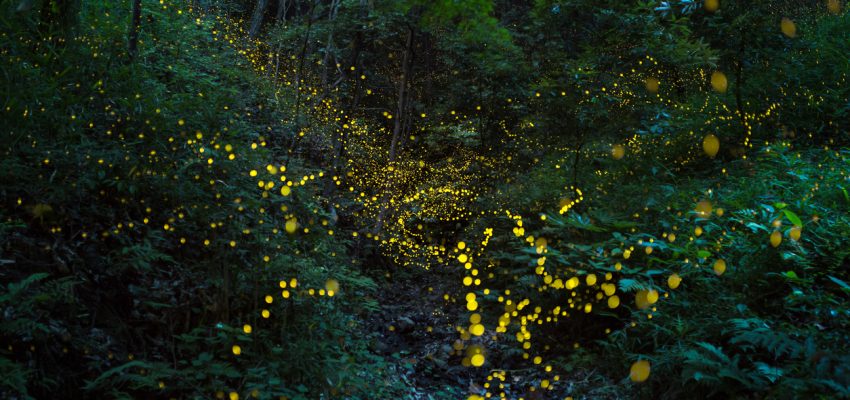On the warmest summer nights, in the meadow on the edge of my patch of woodland, the fireflies come out. No matter how many times I see their adorable glowing butts, it never fails to enchant. It’s magical. I’m so very fond of them, but the over 2,000 species of firefly are losing ground to human activity.
Researchers at Tuft’s University found that the usual suspects were to blame; pesticides, habitat loss and light pollution. “Lots of wildlife species are declining because their habitat is shrinking,” said Sara Lewis, lead researcher and professor of biology at Tufts University, “so it wasn’t a huge surprise that habitat loss was considered the biggest threat. Some fireflies get hit especially hard when their habitat disappears because they need special conditions to complete their life cycle.”
We can do much to help the fireflies thrive by providing a little oasis for them in our own gardens. Stop using pesticides. They are terrible for your health, for your children and pets and for all the ‘good’ bugs we need for pollination. The same goes for fungicides and herbicides. You can find natural solutions to weeds, fungus and unwanted pests here.
Quit mowing part of your lawn or find a lawn alternative. Creating a small meadow in a part of your yard doesn’t need to be a scraggly mess of weeds, wild flowers and beautiful native grasses can make a stunning display – just add fire flies!
If you must have garden lights, make them motion-activated. The advent of solar lights has meant most gardens are dotted with lights these days. They do make for a lovely display, but light pollution means mating fireflies can’t find each other. Motion-activated lights will give you the benefit of light when you are in the garden while giving the fireflies the opportunity to find love when you are not.




